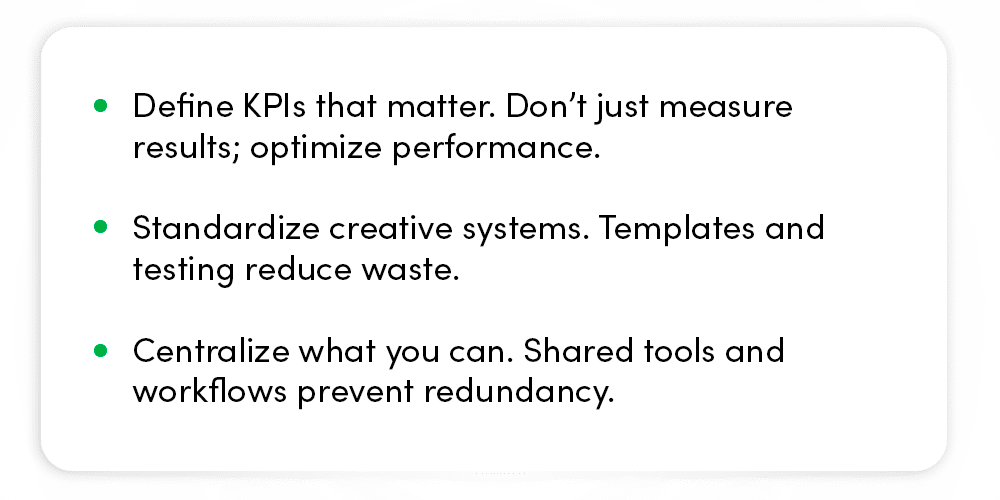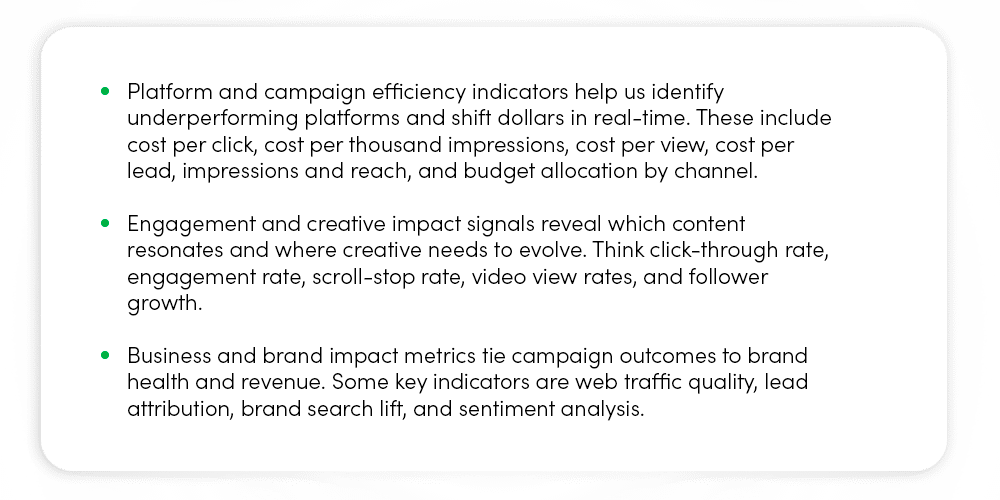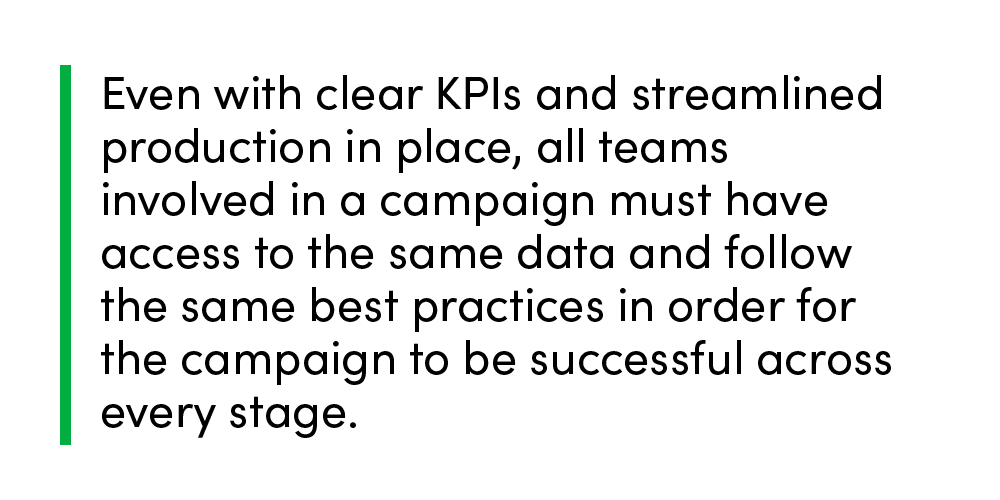In today’s economic environment, efficiency isn’t just nice to have, it’s quite literally a matter of ROI life or death. Whether you’re running an in-house team for a brand or managing multiple clients at an agency, marketing optimization is critical to your business and can ultimately differentiate you from the competition. Evaluating your marketing team’s efficiency goes hand in hand with its effectiveness and involves aligning your operations, tools, and marketing KPIs in a way that eliminates waste and amplifies impact.
At Leap, we believe smart marketing isn’t about spending more; it’s about spending wisely. But we also understand that cost-savings strategies come with their own set of challenges, including clarifying KPIs and streamlining workflows. So, we designed our network of specialized agencies to model the kind of operation our clients need to adapt – and that we’re committed to helping them achieve.

Our approach is streamlined, strategic, and always accountable to results. We use a structured, goal-aligned KPI framework to track the health and performance of our clients’ campaigns and optimize accordingly. Our goal is not only to meet metrics, but to translate them into meaningful insights that help redistribute marketing spend to the channels that deliver real results.
Every tracked metric ties back to program optimization, media efficiency, and lead quality, ensuring that every investment is continually refined for performance, value, and impact. The cost-saving methods and KPI frameworks we use at Leap help both brands and agencies unlock greater efficiency, and using these key principles, you can apply the same logic to your own operation:

Let’s take a deeper dive into each of these efficiency schemas to better understand how they might look and function within your existing brand strategy.
KPI Frameworks Lead to Cost Savings
Brands can sometimes fall into the trap of measuring performance metrics without truly understanding what the numbers mean. Relying too heavily on vanity metrics, such as impressions or likes, without connecting those numbers to actual business outcomes can mean that higher-performing tactics may get overlooked while spend gets wasted on underperforming tactics.
One of the most common missteps we see in media planning is using the same KPI to judge every tactic, when every channel and every part of the marketing funnel should be evaluated by its own set of meaningful KPIs. When comprehensive sets of KPIs are organized into a strategic framework, they do more than just track performance — they enable smarter budget allocation by identifying underperforming audiences, inefficient platforms, and creative waste. This leads to faster optimizations and more efficient media spend.
Our approach to marketing budget optimization at Leap starts with a framework that segments brand and performance marketing KPIs across three tiers:

By applying this kind of structure to your measurement and reporting — linking metrics to their intended goals — your brand can optimize campaign performance in real-time and make adjustments to your marketing budget based on data, not guesswork.
Streamlining and Testing To Prevent Waste
The frequency with which you measure your KPIs and how you respond is as important as which KPIs you choose to monitor. Media plans that are locked in early and left unchecked often underperform. Without agile testing or audience-level optimization, brands might miss the opportunity to improve performance mid-flight and end up spending valuable money on content that’s just not moving the needle forward.
If your creative team is spending time and resources on content that isn’t really delivering results, you may be eating into your ROI unnecessarily, especially if your content creation, review, and approval process isn’t streamlined for efficient production. Using standardized creative systems like modular templates, establishing clear approval workflows, and relying on iterative testing can allow teams to move faster and reduce unnecessary rounds of edits, which creates the long-term benefit of minimized internal hours and reduced production costs.
At Leap, we reduce production waste through a modular creative approach. Instead of building multiple one-off assets, we design flexible templates with swappable components, like headlines, CTAs, and visuals. This speeds up approvals, enables A/B testing without complete rebuilds, and minimizes internal labor. We pair this with agile testing frameworks that surface high-performing combinations early, allowing us to rotate or retire creative assets that aren’t performing and reallocate budget to those that are. The outcome is faster launches, fewer review rounds, and lower cost per result.
Integrating Teams and Tools Improves Results
Even with clear KPIs and streamlined production in place, all teams involved in a campaign must have access to the same data and follow the same best practices in order for the campaign to be successful across every stage. For many brands, collaboration across planning, production, and analytics often happens in silos. That misalignment leads to delays, duplicated work, bloated timelines, and unnecessary budget burn.

Leap addresses this challenge with a centralized team model, supported by shared platforms such as Sprinklr and Adobe Analytics. Strategy, production, and analytics teams work within predetermined, integrated systems to reduce back-and-forth and improve visibility. Through the integration of Sprinklr and Adobe Analytics, we can track behavior across the entire marketing funnel in real-time and actively reallocate budgets toward top-performing segments.
By utilizing shared technology and integrated teams, we streamline decision-making, avoid duplicating work, and save both time and budget, which translates directly into bottom-line results.
Building Your Framework
Cutting costs and streamlining processes even more than you already have may seem like an insurmountable task, and one you truly don’t have time for. At Leap, we come alongside brands to clarify their KPIs and support their production, in essence building operational models from the client’s perspective — integrated where it matters, specialized where it counts. By aligning strategy, creative, and analytics under one performance framework, we help brands move faster, spend smarter, and scale with confidence.
Our collaborative model ensures agility at every touchpoint, minimizing waste and maximizing value. From campaign kickoff to performance reporting, every decision is driven by data, insight, and a commitment to measurable outcomes. If your brand is exploring ways to maximize your marketing optimization or is in search of an agency partner who you can trust to operate efficiently and effectively, we’d love to help. Contact us today to learn more.